From the January 2021 issue of Apollo. Preview and subscribe here.
For a work of conceptual art, Roelof Louw’s Soul City (Pyramid of Oranges) (1967) is unusually generous. Some 5,800 oranges are stacked neatly in a wooden frame on the floor of a gallery. Then visitors are allowed to help themselves to the fruit. By the time I saw it in the big conceptual art show at Tate Britain in 2016, the pyramid had dwindled: it looked more like a ball pit for toddlers, as improvised by a greengrocer.
Louw’s oranges, in their abundance and with their more or less uniform shapes, are everyday things; you might see them piled like this, if not in such quantities, on any high street in Britain. But perhaps, in carrying them into the unfamiliar setting of a gallery and then constructing a cairn out of them, Soul City also carries a faint memory of a time in which such fruit were considered rich and strange. In baroque Europe, citrus cultivation inspired widespread fascination, even a type of devotion.
Such reverence is evident in The Book of Citrus Fruits, a grand volume from Taschen that reproduces the plates of the two published instalments of Johann Christoph Volkamer’s Nürnbergische Hesperides (1708 and 1714), as well as the surviving proofs for a third volume that was never realised. Volkamer illustrated hundreds of varieties of citrons, lemons and oranges, depicting them at actual size in folio format and recording a now unfamiliar array of shapes, textures and patterns of pith and pulp. In the early 18th century, citrus were curiosities to match the tenants of any collector’s cabinet.
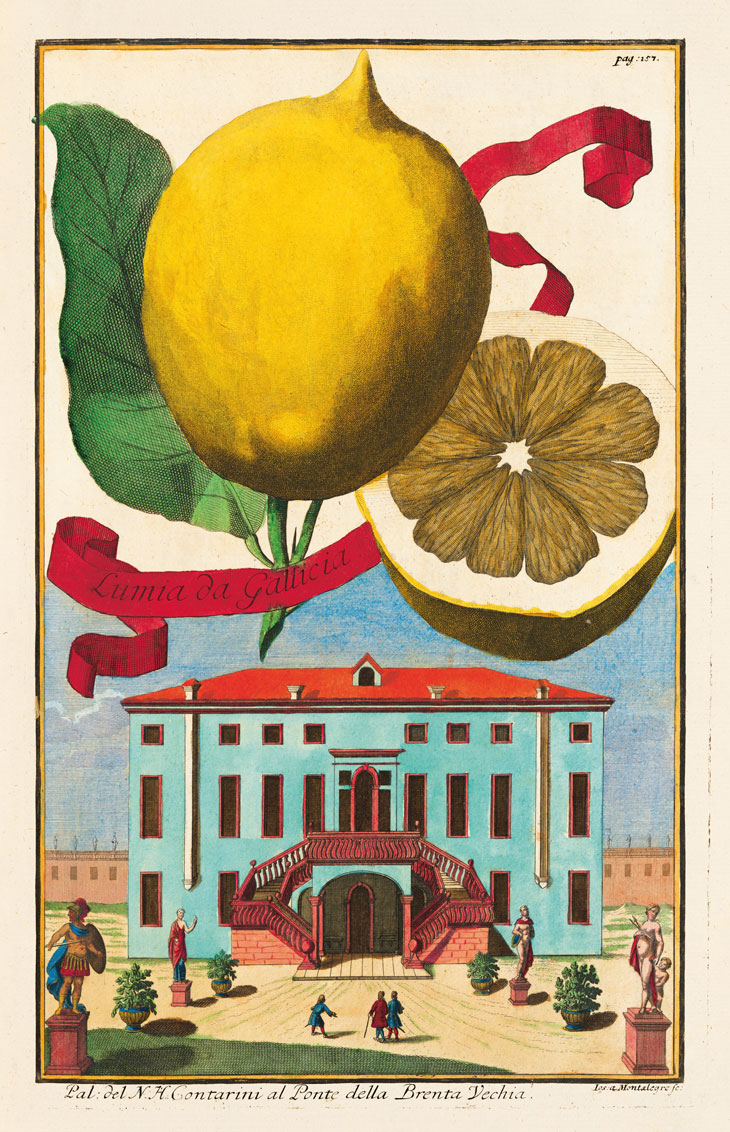
The ‘Lumia di Gallicia’ with a view of Villa Contarini al Ponte, Province of Padua, in Johann Christoph Volkamer’s Continuatio der Nürnbergischen Hesperidum (Frankfurt and Leipzig, 1714). © Stadtarchiv Fürth, Bavaria
Volkamer (1644–1720), a merchant from Nuremberg, spent most of the 1660s managing the silk factory that his grandfather had established in Rovereto in northern Italy. Towards the end of that decade, he returned to his native city, where he dedicated himself to the cultivation and study of citrus in his garden in the suburb of Gostenhof – and from where he corresponded with a network of botanists across the world, including Maria Sibylla Merian, the renowned Dutch chronicler of the flora and fauna of Suriname. In the spirit of empirical observation, and with an urge to better classify citrus varieties, Volkamer took to drawing from life the fruit he cultivated or came across, ‘some of which presently grow in Nuremberg and others which were brought here from various foreign places’ (his drawings are lost). For publication, they would be ‘engraved in copper with the greatest accuracy’.
‘While this work was in preparation I kept thinking of Italy,’ Volkamer wrote. His was not the first mind to be carried across the Alps by the scent of lemons, but perhaps he was referring not only to the gardens he had visited in his youth but also to Italian models of collecting and cataloguing citrus plants: of the legendary Medici collections at the Boboli Gardens and Castello, for instance, and the Hesperides (1646) of Giovanni Battista Ferrari, the first book to attempt classification of the genus. To illustrate that work, Ferrari had drawn on the watercolours of citrus fruit by Vincenzo Leonardi in the ‘Museo Cartaceo’ (paper museum) of the great Roman collector Cassiano dal Pozzo. One such drawing showing a digitated citron, its surface pitted like a boulder, is currently on display at the V&A as part of its ‘Renaissance Watercolours’ display (until 18 April).
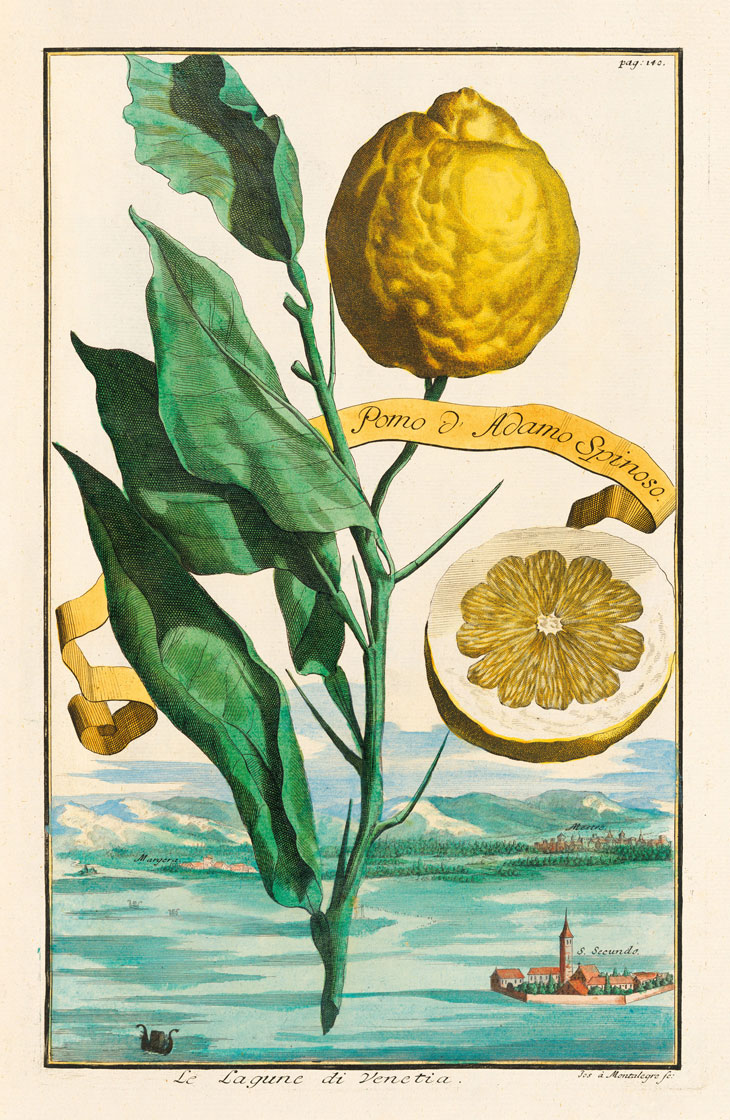
‘Pomo d’Adamo Spinoso’ with a view of the lagoon in Venice, in Johann Christoph Volkamer’s Continuatio der Nürnbergischen Hesperidum (Frankfurt and Leipzig, 1714). © Stadtarchiv Fürth, Bavaria
Volkamer’s publication was very much a tramontane endeavour, however. The text was in German, although the names of each fruit were printed in Italian on the cartouches that float through the engravings. Most notable was the decision to juxtapose the citrus illustrations with views of Nuremberg, so that the fruit are suspended above miniature worlds of palaces, gardens and even the local crossbow range (in the second volume, the views show villas in the Veneto; the surviving plates of the third volume celebrate Bologna). As Iris Lauterbach points out in her introduction to The Book of Citrus Fruits, Volkamer allowed an artistic licence with these vedute that he did not with the fruit, his engravers adapting buildings to accommodate limned lemons or the lines of limes.
Nevertheless, there was also a type of imaginative freedom in the act of grafting citrus to cityscape: an assertion of the sophisticated culture of Nuremberg, no doubt, but one that made the depicted fruit seem not life size (as they were) but gargantuan. Although there was no direct correlation between each fruit and its accompanying view, some plates achieve visual felicities in the interrelationship between their parts. One of the grandest citrons, the ‘Cedro grosso Bondolotto’, sits above the roofscape of Nuremberg, as though asserting the magnificence of both; the twisted shapes of deformed oranges (‘Aranzo distorto o monstroso’) rhyme with the curlicues of box hedges laid out in baroque gardens.
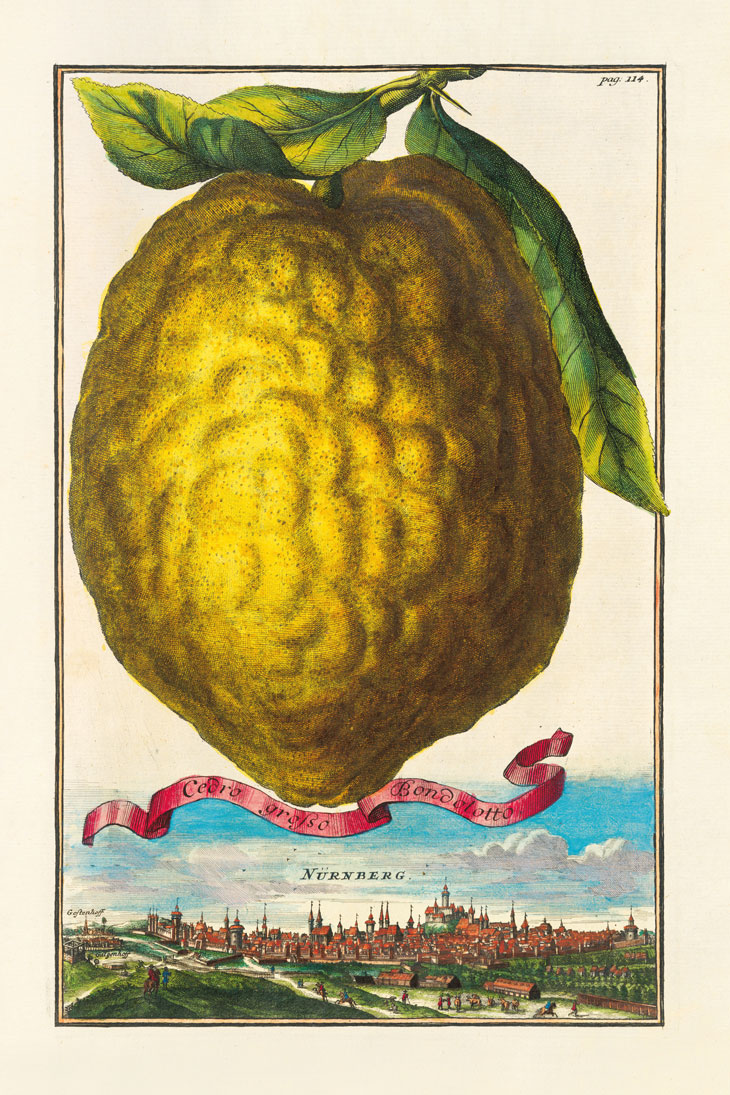
The ‘Cedro grosso Bondolotto’ with a view of Nuremberg, in Johann Christoph Volkamer’s Nürnbergische Hesperides (Nuremberg, 1708). © Stadtarchiv Fürth, Bavaria
Striking, too, is how Volkamer’s scientific objectives are framed by the mythology of citrus fruit. He grouped the plants into three categories – citrons; lemons and limes; and bitter oranges, sweet oranges and grapefruits – and presented each under the aegis of one of the three Hesperides, the nymphs who tended the garden of the gods and its golden apples. Perhaps the legends associated with citrus were a necessary reminder of what still seemed inscrutable about them. For those who cultivated them, the work of grafting and cross-pollinating different trees could body forth unexpected variations. Volkamer’s fruits are by turns refined and unruly, whether because they include eccentric forms or because their shapes sometimes break the frame that surrounds his prints. ‘There was always something mysterious about [citrus botany],’ the garden historian Helena Attlee writes, ‘something fluid and unknowable, so that its fruit was endlessly surprising and entertaining.’
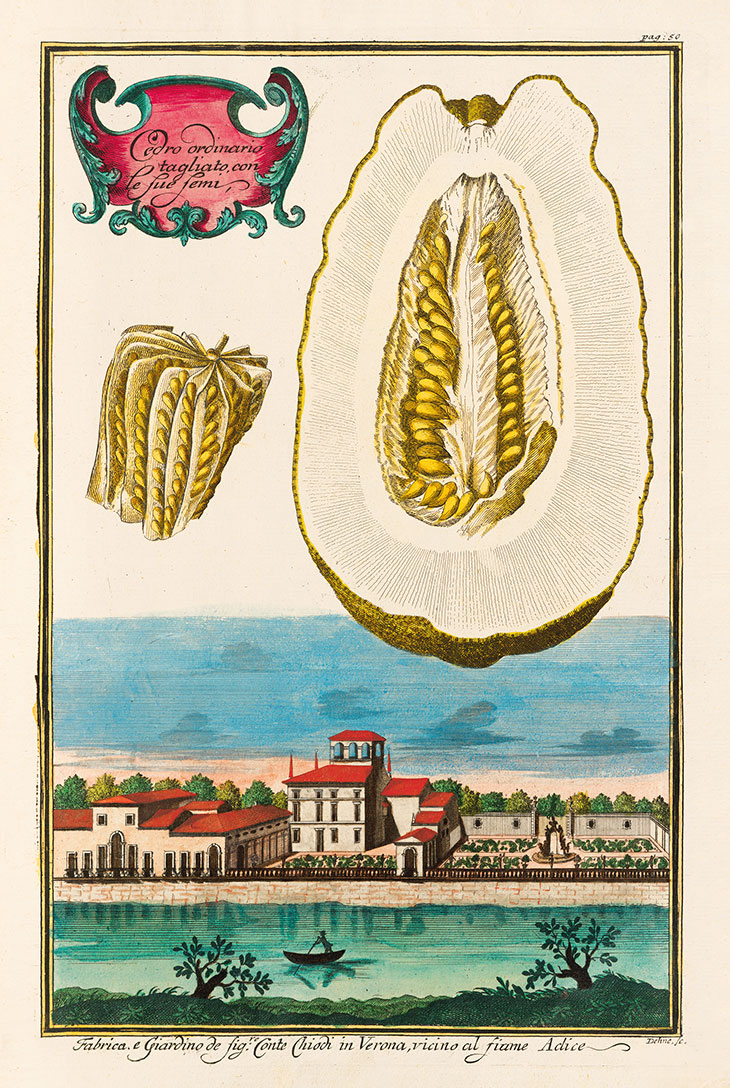
‘Cedro Ordinario’ from Johann Christoph Volkamer’s Continuatio der Nürnbergischen Hesperidum (Frankfurt and Leipzig, 1714). © Stadtarchiv Fürth, Bavaria
The Book of Citrus Fruits is published by Taschen.
From the January 2021 issue of Apollo. Preview and subscribe here.
Unlimited access from just $16 every 3 months
Subscribe to get unlimited and exclusive access to the top art stories, interviews and exhibition reviews.

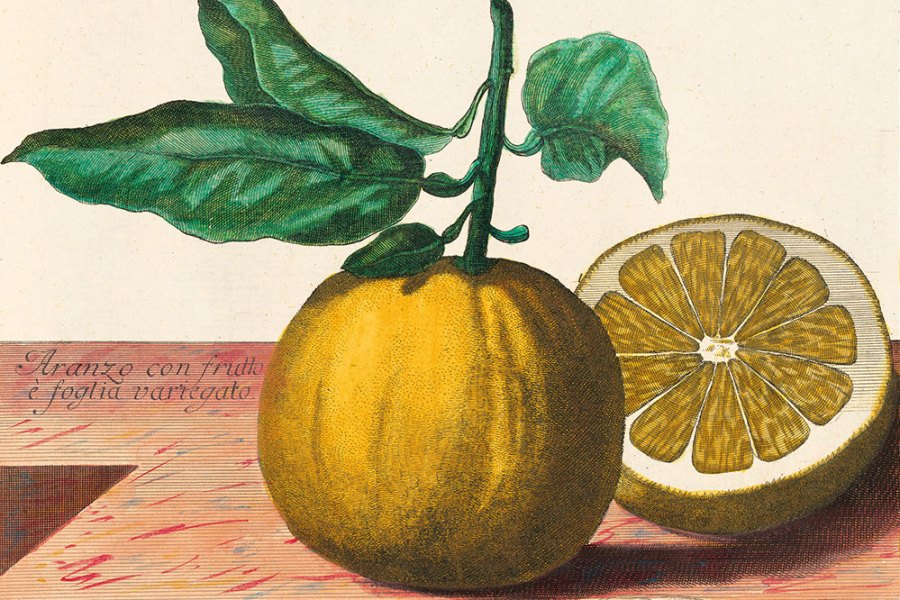
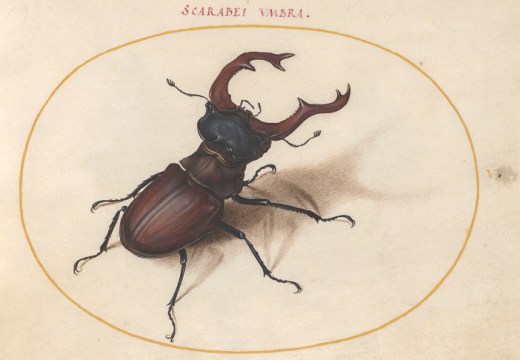
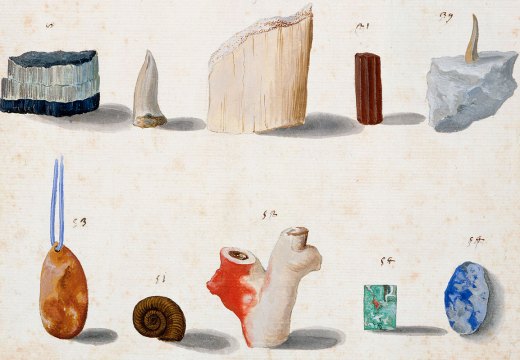
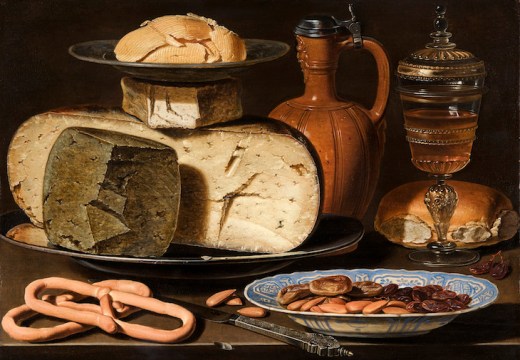









![Masterpiece [Re]discovery 2022. Photo: Ben Fisher Photography, courtesy of Masterpiece London](http://www.apollo-magazine.com/wp-content/uploads/2022/07/MPL2022_4263.jpg)
Has the Fitzwilliam lost the hang of things?